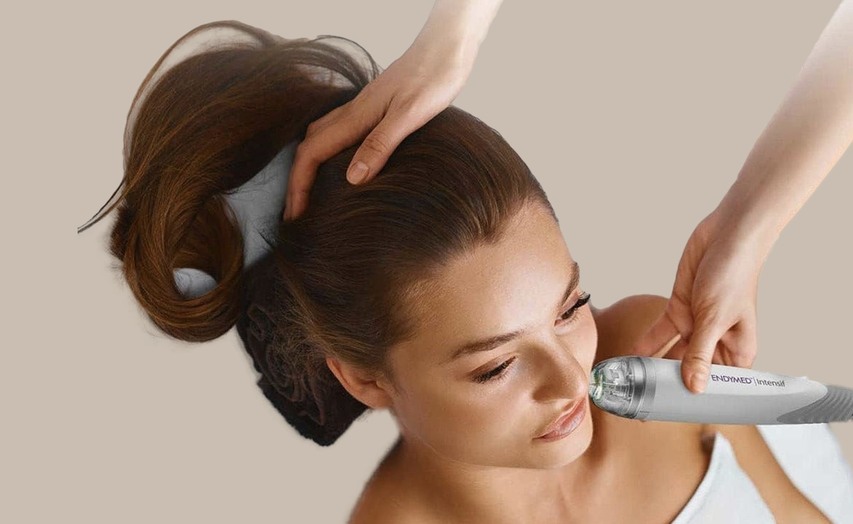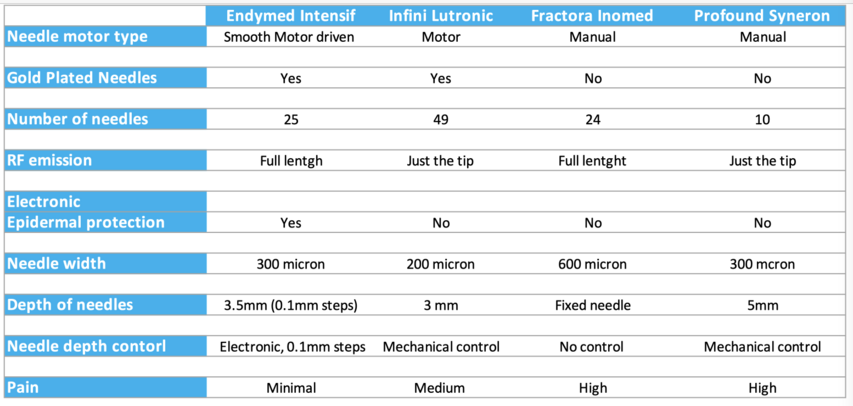Best office acne scars treatment - micro-needling with radio-frequency

Understanding Post-Acne Signs and Treatments
Post-acne signs generally fall into three categories: pink spots, brown spots, and textured scars. Each type requires a different treatment approach.
- Pink Spots: These marks usually fade within 2–3 months, mainly after controlling active acne.
- Brown Spots: Dark spots can be treated with topical dark spot removers containing hydroquinone or arbutin.
- Textured Scars: Often referred to as "ice-pick," "boxcar," or "rolling" scars, these are more difficult to treat and typically require in-office procedures for significant improvement.
Can I Get Rid of Acne Scars with Topical Treatments?
Topical treatments cannot eliminate depressed acne scars. However, they can improve the appearance of the skin:
- Retinol or Niacinamide Creams: These can enhance skin texture and reduce the visibility of scars.
- Dark Spot Removers: Products with hydroquinone or arbutin are effective for fading dark acne marks.
If you’re not ready for radiofrequency, laser treatments, or surgery, topical treatments can still be a valuable part of your routine.
Textured scars, like shallow "rolling" scars and deep "ice-pick" scars, used to be treated with dermabrasion, CO2 laser resurfacing, chemical peels, or microsurgery. While effective, these methods often involve significant downtime and discomfort.
A newer option, fractionated radiofrequency (RF), combines fractional treatment with radiofrequency energy to rejuvenate the skin.
Types of Fractionated Radiofrequency
- Fractional RF Skin Resurfacing: Targets the epidermis and dermis for skin rejuvenation.
- Fractional Microneedling RF: Focuses on deeper layers of the skin to stimulate collagen and elastin production.
Both methods are more effective than fractional ablative lasers, offering comparable results with less pain and downtime.
What is fractional skin resurfacing (FSR) with radiofrequency?
The original 3DEEP fractional RF Resurfacing handpiece uses a matrix of 112 tiny RF micro-electrodes to create small zones of epidermal coagulation with simultaneous volumetric dermal heating of up to 2.8mm. The unique system EndyMed developed uses six independent RF sources instead of the one source used in other RF systems on the market (Monopolar, Bipolar, "Multipolar"). Using multiple RF sources in the EndyMed PRO allows for deep dermal non-ablative skin tightening and micro ablative fractional RF skin resurfacing, all on the same system console.
What is Fractional RF Skin Resurfacing (FSR)?
Fractional RF skin resurfacing was developed to address the limitations of full-face resurfacing. Creating microscopic "dots" on the skin promotes rapid healing while minimizing pain and recovery time.
What is Radiofrequency (RF)?
Radiofrequency (RF) technology uses energy waves to heat the skin and stimulate collagen production. Unlike lasers, RF does not emit light, making it safe for all skin types and less likely to cause hyperpigmentation.
Fractional Microneedling RF Explained
Fractional RF microneedling uses ultra-thin needles to deliver RF energy into the dermis. This encourages the skin to produce collagen and elastin, improving the appearance of acne scars.
Recent scientific studies highlight the efficacy of fractional radiofrequency microneedling (FRM) as a safe and effective monotherapy for managing acne scars.
A systematic review of 16 studies involving 481 patients aged 15 and older demonstrated significant skin rejuvenation and comparable efficacy to other advanced therapies, including fractional ablative CO2 lasers and platelet-rich plasma. FRM was particularly effective for specific scar types such as Icepick, Boxcar, and M-shaped scars and was deemed safer for patients with Fitzpatrick skin types III to V, with minimal adverse effects like transient erythema. In terms of patient satisfaction, up to 89% of participants reported high satisfaction, with some experiencing excellent improvement in scarring. Additionally, Dermatology Life Quality Index (DLQI) scores showed substantial improvement, reflecting enhanced psychosocial well-being and quality of life.
What to Expect During RF Treatments
Preparation: A topical anesthetic is applied to numb the skin.
Procedure: RF energy is delivered via micro-electrodes or microneedles.
Recovery:
- Redness lasts a few hours.
- Micro-crusts form on the skin, lasting up to 5 days.
- Normal activities can usually be resumed immediately.
Advantages of Fractional RF Over Lasers
- Minimal Risk of Hyperpigmentation: Unlike lasers, RF energy is not absorbed by melanin, making it safer for darker skin tones.
- Precise Energy Delivery: RF energy can be delivered at controlled depths, reducing tissue damage.
- Stimulates Collagen and Elastin: Improves skin texture and elasticity.
Differences Between RF Microneedling Devices
Older devices like Fractora and Syneron Profound use manual needle insertion, which can cause more damage and pain. Modern systems like EndyMed Intensif uses motorized needles for a smoother, more comfortable experience.
How is RF Microneedling Performed?
Treatments are typically spaced four weeks apart, each lasting 15–20 minutes. Results gradually appear over several months. The procedure is well-tolerated, with mild redness and swelling being the most common side effects.
Fractional RF microneedling can be performed on all skin tones with a very low risk of post-inflammatory hyperpigmentation.
References:
1. Niaz, G., Ajeebi, Y., Alshamrani, H. M., Khalmurad, M., & Lee, K. (2025). Fractional Radiofrequency Microneedling as a Monotherapy in Acne Scar Management: A Systematic Review of Current Evidence. Clinical, Cosmetic and Investigational Dermatology, 18, 19–29.
2. Cho SI, Chung BY, Choi MG, et al. Evaluation of the clinical efficacy of fractional radiofrequency microneedle treatment in acne scars and large facial pores. Dermatol Surg. 2012;38(7 Pt 1):1017-1024.
To find the right acne treatments for your unique skin, take the free skin assessment by clicking here.




